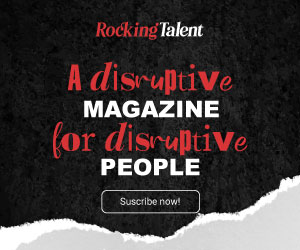Today, more than ever, the HR leader is understood as an enabler of better and more sustainable results. According to a Gartner survey of more than 800 HR leaders from around 60 countries, 60% said that effective leadership is one of the jobs to be addressed by 2023, and 24% of HR leaders say their approach to leadership development does not prepare leaders for the future of work.
Effective Leadership:

In the book “Good to Great” by Jim Collins, 1,435 companies were examined over a period of 40 years. From this research, the first concept I wanted to share with you is Level 5 Leaders.
If we think of an organizational pyramid with respect to Leadership, at the base we place the Highly Capable Individual, who contributes using his or her skills, knowledge, and good work habits. One step higher is the Contributing Team Member, who can use his or her skills and knowledge to help his or her team succeed. At level 3, the Competent Manager, a leader who is able to organize his team to efficiently achieve predetermined objectives.
Level 4 is Effective Leaders. This is where most leaders can be found. They are able to create commitment from their team to synergistically pursue a clear and compelling vision. They are also able to create a high performing team. And finally, we come to the pinnacle of leadership: the Great Leaders. They have the skills of the other four levels plus a unique combination of willingness and humility. And it is this combination that makes them great. These leaders are characterized by delivering results sustainably, they create new leaders, they share praise, they take the blame, their ambition is for the organization to excel more than themselves, they tend to be modest about what they personally contribute and, in most cases, they come from within the same organization.
The second concept I would like to share with you is that of Appreciative Leadership, which Laura Isanta develops in her book Appreciativity. As we grow up, we tend to get into the habit of focusing on everything that doesn’t work, our defects and weaknesses. At the same time, it becomes more difficult for us to appreciate and enjoy the people and things around us. The development of appreciative skills is an invitation to recover capacities such as astonishment, benevolence, focus on talents, strengths, opportunities and abundance.
The ACOM Appreciation with myself, with others and with the world model, developed by Laura Isanta, has been successfully tested in important companies in different countries around the world. It is designed to enhance and develop appreciative skills in three fundamental areas for human beings: with myself, with others and with the world around me.
Leaders with high levels of Appreciation are co-constructors of healthy work climates, more competent when exercising leadership, have greater tolerance for uncertainty, are skilled in managing their own and others’ positive emotional states, experts in asking and inquiring to find the positive, active promoters of growth and transformation.
The appreciative leader plays his role focusing on the best of people and the organization, they are active co-constructors of contexts that mobilize people towards the achievement of organizational goals with a high degree of commitment, motivation and inspiration.
By: Fer Niizawa.
Organizational design for change management:

- In the current competitive environment, organizational design for change management emerges as one of the trends we will see in the coming year and will focus on the search for solutions to cope with the ever-changing environment. As indicated in the Gartner report, “Top 5 Priorities for HR Leaders in 2023”, 53% of respondents consider change management as a priority objective for this coming year.
As Gartner indicates, the dizzying dynamics of the context forces companies and people to embrace permanent change, which represents a great challenge for organizations and, at the same time, a great opportunity for people management areas to lead and sustain continuous transformation. We know that the pace of change often confronts companies with problems that are very difficult to solve, dead ends that make it necessary to look for alternative ways of doing things.
The speed of technological evolution, the scarcity of talent, the new generations with different mindsets and the impact of the pandemic on the way we relate to work, make up a cocktail that is very difficult to digest for organizations with cultures from another century that are clearly outdated and not very functional for business efficiency.
Today, the path of transformation is inevitable. This is the great challenge for people management leaders who face a complex scenario with multiple variables to address, which requires understanding some of the obstacles:
The speed of changes in the context is not the speed of change of people.
Fear of change, fear of losing status, control or power, and anxiety due to a context of high uncertainty become a major obstacle for leaders to dare to face transformational processes.
In these times, the old and the new coexist, producing a clash between totally opposing energies that leads to great tension between management and collaborators and impacts on the climate of organizations.
The people area takes center stage and must generate spaces for conversations that allow the transformation of deep beliefs and enable open and inclusive listening to what is new and different. Implementing and proposing new artifacts and rituals that can convey the necessary changes.
It is time to decentralize egos, of horizontal leadership with a transcendental purpose that can function as a compass and a retaining wall to the anguish that change represents.
It is time for the people areas to have the necessary courage, to avoid “As If” solutions and to ask uncomfortable questions that challenge leaders, seeking to sensitize them to the need to make real personal and organizational transformations.
By: Gabriel Pereyra.
RECRUITMENT:
People talent is a key element for the achievement of organizational objectives. Having high-performing teams with the right soft skills and technical knowledge has become imperative, especially in the face of today’s complexity. According to a Gartner report, 50% of HR leaders expect talent competition to increase in the next 6 months, and 36% say that their current recruiting sources are not sufficient to identify profiles with the competencies they are looking for.
EMPLOYEE EXPERIENCE: Aligned to the previous trend, one of the challenges of 2023 will not only be to acquire the ideal talent but to create a positive experience throughout their cycle, providing concrete development opportunities and an individualized career plan. According to Gartner’s research in its report, 44% of HR leaders believe that their organizations do not have attractive career paths. It is in this sense that being able to map the skills and potential of talents is key to be able to develop them.
Future of work:
Exponential technologies and the speed at which changes are occurring are confronting us with new scenarios of work, competitive and business models. In this sense, organizations should review their strategic planning and evaluate whether a change is necessary. As the Gartner report states, 42% of surveyed leaders know that it is necessary to think about it and 51% recognize that their current workforce planning is outdated

The use of ChatGPT in HR is gaining popularity in the industry due to its multiple applications and its ability to improve efficiency in the department. ChatGPT is a language model developed by OpenAI, which has been trained on a wide variety of tasks, including human conversation, making it ideal for use in HR.
One of the biggest discoveries of using ChatGPT in HR is its ability to aid in candidate screening. Instead of having to manually sift through a stack of resumes and applications, ChatGPT can help make an initial selection of the most suitable candidates by assessing skills such as communication and aptitude for the job.
Another important application of ChatGPT in HR is its ability to assist in interview management. The system can be programmed to ask specific questions and evaluate candidate responses in real time. This allows HR managers to have a deeper and more objective understanding of candidates, thus improving selection accuracy.
In addition, ChatGPT is also useful in employee care. As an artificial intelligence system, it can respond to frequently asked employee questions quickly and efficiently, freeing up time for HR managers to focus on more strategic tasks. Its customization capabilities also allow companies to tailor it to their specific needs and provide more personalized employee care.
However, it is important to keep in mind that ChatGPT should not be seen as a complete replacement for humans in HR. It is a valuable tool, but it cannot replace empathy and human understanding in complex or sensitive situations.
In conclusion, the use of ChatGPT in HR is improving efficiency in the department and providing a more objective way to evaluate candidates and serve employees. However, it is important to use it as a complement to human interaction rather than replacing it completely.
Interesting article? In fact, it was written directly by CHATGPT, in response to my request: “Write a 350-word article on the use of GPT in Human Resources”.
Although CHATGPT is revolutionizing and monopolizing all conversations in recent months, the truth is that the technology behind it, which is Artificial Intelligence – specifically machine learning, natural language processing and Robotic Process Automation (RPA) – has been used for years in the area of Human Resources, and more and more companies are using chatbots to answer common employee questions, or perform the first stages of interaction with candidates in the selection process.
There are also many companies that use this technology to classify the open comments of their employees in different surveys (climate, exit…), so CHATGPT is nothing new in terms of its use. However, let’s give it the honor of having democratized this technology (for as long as the free version works).
By the way, CHATGPT can also write you a job offer or the CEO’s Christmas greeting note to all employees. You are welcome
By: Ana Valera Rubio





